26. A Kaiseki meal at Pontocho Uzuki (Uan)--Ken
"Remind me," she said, "What's Kaiseki again?" blanching with sticker shock at the price of the dinner reservations that the Hyatt concierge and I had just made for Wednesday night.
"It's Kyoto haute cuisine, and it's going to be a really special meal."
We were so excited about our kaiseki dinner that we actually went looking for the place the day before—Pontocho Uzuki (maybe also called Uan?). (This may be a correct link?)We knew that it was about two and a half 'blocks' south of the top of the Pontocho, and that there'd be a rabbit on the sign. We found it, across the tiny lane from an Italian place named ZuZu, and the rabbit we were looking for turned out to be an impressionist drawing less rodent than Kanji.
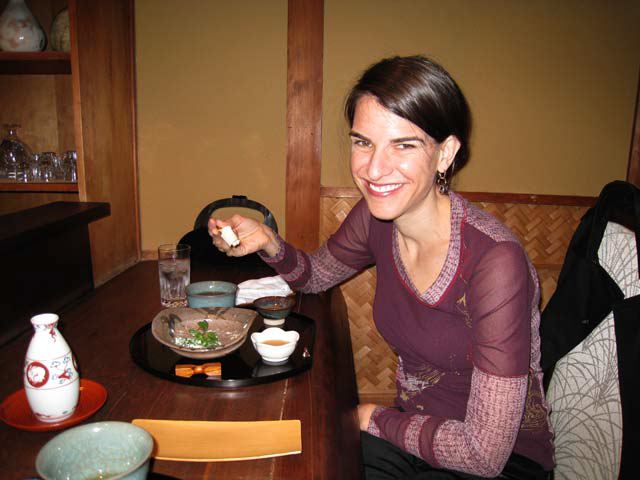
At first I was really disappointed that they sat us downstairs at the bar instead of upstairs on the tatami. Upstairs was full, apparently. But it worked out really well for us, and I didn't have to get a kink in my knees either.
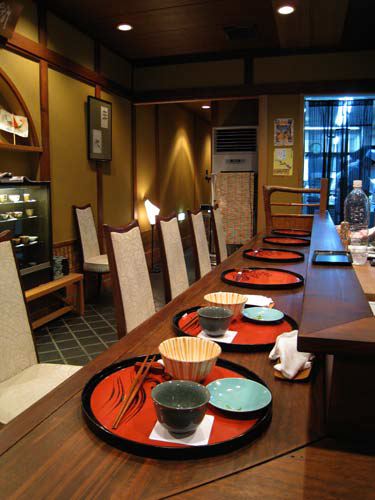
It's a very elegant place. Kaiseki meals come in small bites, with many courses, and very precious and creative presentation. Our main waitress, high-school aged and wearing a thick pink Kimono, graciously and quietly translated the names of the key ingredients of every dish we were served. I watched her turn again and again to the large, dog-eared, Japanese-English dictionary she kept behind the bar before speaking with the customers.
We ordered hot, sweet saki, and it turned out to be the first sake that Kathryn really enjoyed. It must have been top-notch.
The meal started with a sesame-paste ball, then came cubes of wheat gluten each with a different topping. We'd had cubes like this before, but these were by far the best! My favorite one had strong, dark miso paste with crubmled sesame (I think). (That one was actually Kathryn's least favorite.)
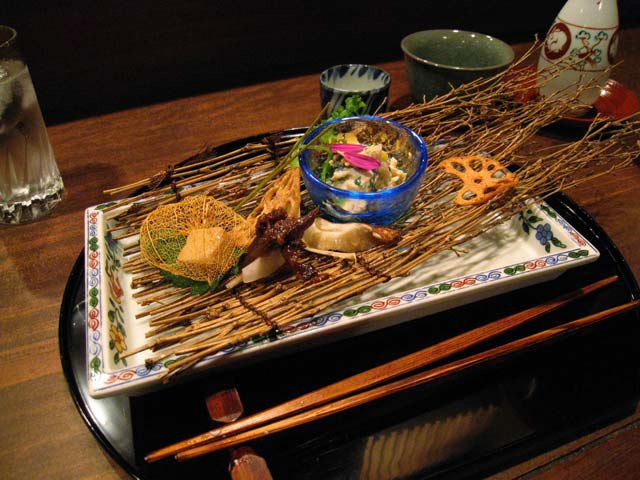
The next dish came on a mat of sticks. I studied and ate every item, savoring the fried lotus chips. I love how the sticks are neatly tied on one side and free on the other, like a fence.
It's hard to see in the photo, but right in the middle there's a pair of thin green twigs held together in the middle with a tiny band of black nori (seaweed). I held them up in my chopsticks and asked the waitress, "Kore o tabemasu ka? Daijobu desu ka?" (Is it okay to eat this?) That really made her laugh—the fact that I wanted to eat the twigs. She told the older waitress when she came into the room and they both had a good laugh.
One dish was all yuba (made from tofu skins): three cubes, plus two gooey ones that were wrapped with a tougher one like a (hosomaki) sushi belt. When it's fresh like that, yuba is divine.

The soup was a clear broth flavored with a masutake mushroom and the zest of a Japanese lemon. It was so unusual. A few days before, we had just seen packages of two or three large masutake mushrooms in the Nishiki-Koji market selling for hundreds of dollars, so I knew that this was a soup to savor. The mushroom itself has an unsual flavor. I described it to Kathryn as being 'like soil' but in a good way, with a deep, round taste. It's something I had never had before.
There was another dish I would describe as a tofu salad.
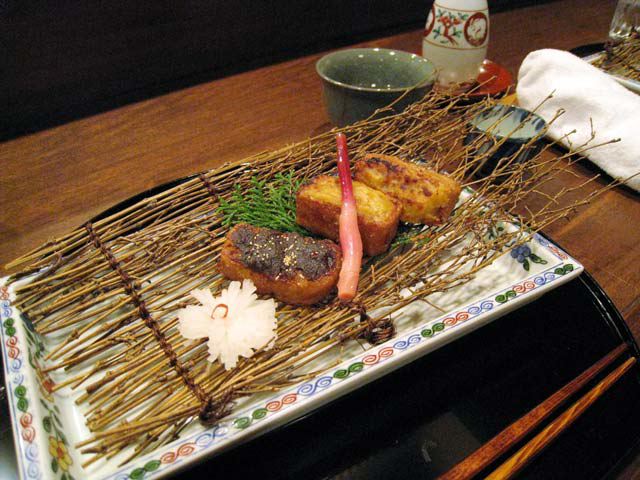
Several of the dishes came out like this, with similar items prepared different ways. The shiny pink and red tube in the middle is picked ginger, done in a way I'd never had before. It was kind of sweet with a slightly fermented edge to it.
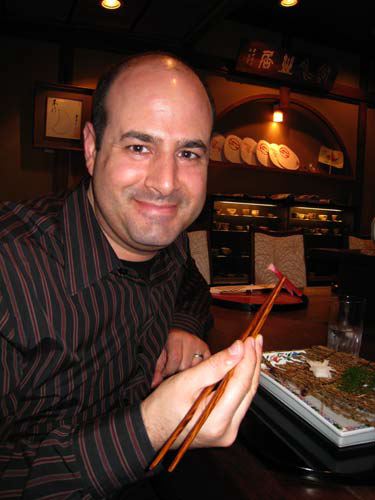
This is one I really liked.

I never did find the name of the translucent white vegetable that came in lots of soups and dishes at the nicer places we ate. The sauce for this dish was thick and starchy. On top were more citrus zest.
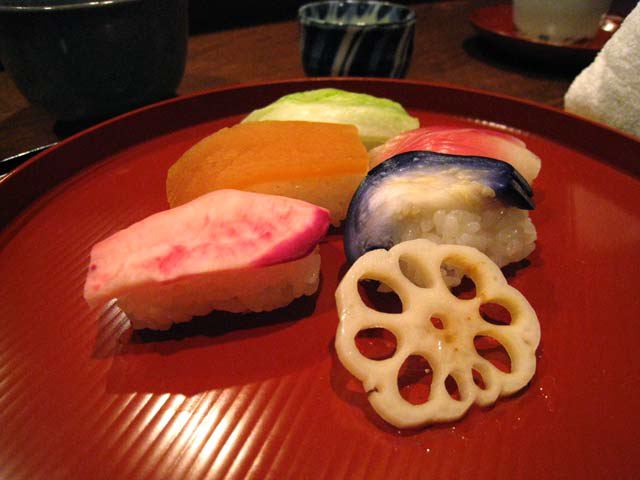
This next dish blew my mind. The waitress explained that this is a Kyoto favorite item. It was a tray of tsukemono (pickles) prepared as sushi (nigiri), over rice balls. Usually I don't care for the pickles so much, but these were delicious, not harsh or too much like kimchee. I think this was course number eight (!), and Kathryn was starting to slow down. I'm sure I ate a few of her tsukemono-zushi!
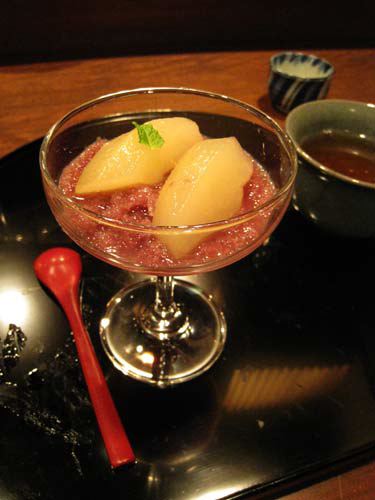
The last course was dessert, alcohol-pickled (sake?) pears over what may have been crushed, skinned grapes.

